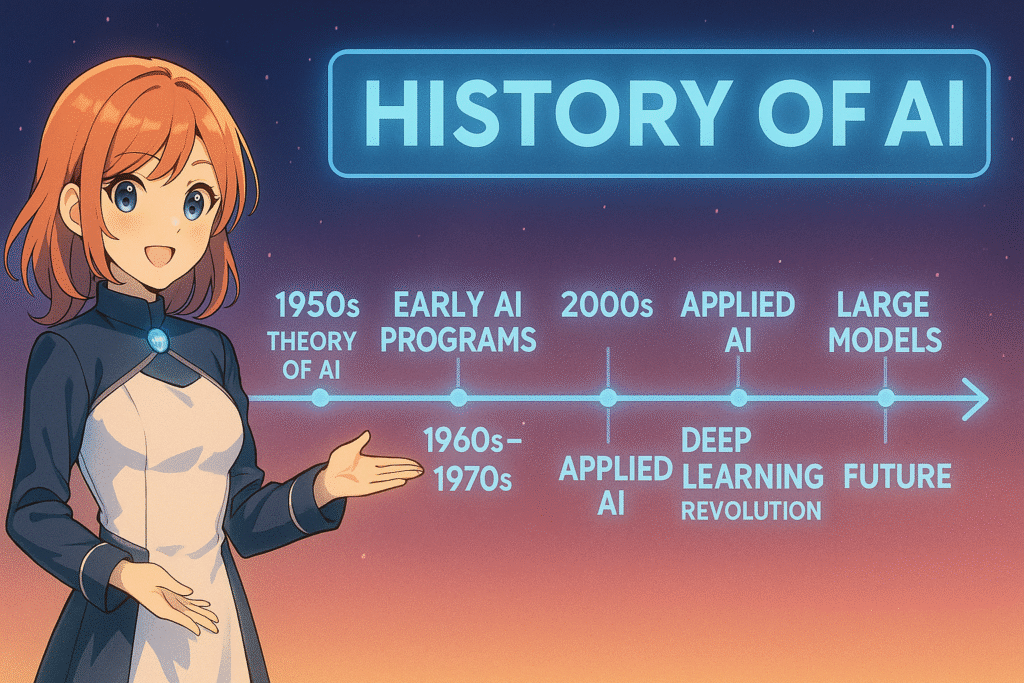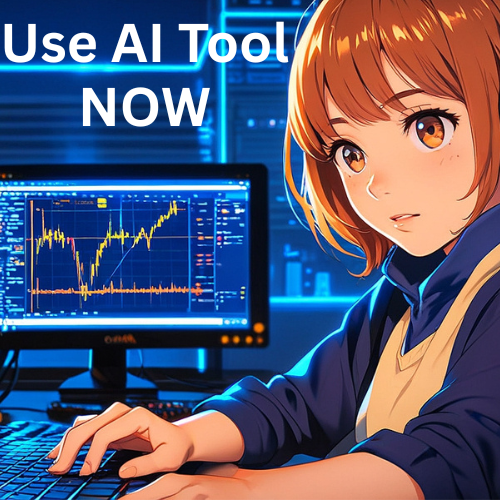
Artificial Intelligence (AI) may feel like a modern marvel, but the journey to where we are today spans nearly a century of imagination, breakthroughs, and engineering. Understanding AI’s history gives us a deeper appreciation for how far we’ve come—and how fast we’re moving toward the future.
🔮 1940s–1950s: The Dream Begins
The concept of “thinking machines” began long before computers existed. In the 1940s, Alan Turing—often called the father of AI—proposed a theoretical machine that could simulate any human calculation. His famous Turing Test, introduced in 1950, asked a now-familiar question: Can machines think?
In 1956, the term “Artificial Intelligence” was officially coined at a conference at Dartmouth College. It marked the birth of AI as a formal field of study.
🧪 1960s–1970s: The First AI Programs
Early AI systems could solve math problems, play games like chess, and follow simple rules. Notable developments included:
- ELIZA (1966): One of the first chatbot programs, simulating a psychotherapist
- SHRDLU (1970): An AI that could manipulate virtual blocks using language
These systems were exciting but limited—they could only operate in narrow, controlled environments.
💤 1980s–1990s: The First “AI Winter”
After initial excitement, progress slowed. Funding dried up when early promises of AI failed to deliver, leading to what’s known as the “AI Winter.” AI research continued, but it lost momentum in the public and commercial space.
Still, behind the scenes, advances were made in expert systems, machine learning, and natural language processing.
💡 2000s: AI Gets Practical
As computing power increased and the internet exploded, AI found its way into everyday products:
- Spam filters
- Recommendation engines (like those on Netflix and Amazon)
- Voice recognition (early Siri and Google Voice)
AI was no longer just a lab experiment—it was solving real-world problems.
🚀 2010s: Deep Learning Revolution
A huge turning point came with deep learning, where neural networks (inspired by the human brain) learned to recognize patterns in huge datasets.
Major breakthroughs:
- ImageNet (2012): AI surpassed humans at identifying objects in images
- AlphaGo (2016): Defeated world champion in the game of Go
- GPT-2 (2019): Proved that language models could generate human-like text
🔥 2020s–Now: AI Goes Mainstream
The release of ChatGPT in late 2022 marked a turning point. It introduced millions to the power of large language models that could write, code, and converse.
Other game-changing tools:
- Midjourney and DALL·E: AI that generates stunning images
- ElevenLabs: AI that mimics human voices
- Claude, Gemini, and DeepSeek: Competitors pushing the boundaries of safe, multilingual, and open AI
AI is now:
- Writing essays and novels
- Assisting developers with code
- Powering customer service chatbots
- Generating music, videos, and art
- Automating business operations
📈 The Future of AI
We’re now entering the age of AI agents—tools that not only think but act on your behalf. They’ll browse the internet, book appointments, run workflows, and more.
But with this growth come big questions:
- How do we regulate AI?
- Who owns AI-generated content?
- What jobs will change—or disappear?
AI’s history isn’t just about technology—it’s about people, imagination, and society. And it’s still being written.
🎯 Final Thoughts
From theory to reality, AI has traveled a long road—and it’s moving faster than ever. The best way to stay ahead? Learn what’s possible today and start using it.
That’s exactly what Use AI Tool Now is here for.
